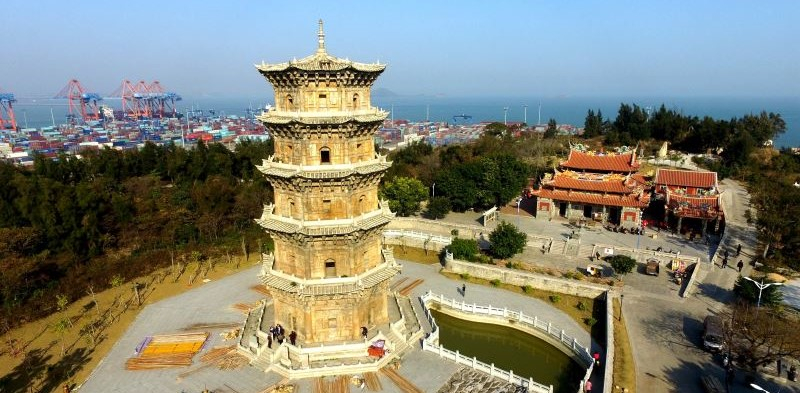
Starting Point of Maritime Silk Road
Splendid
Chi Culture
Topic
Starting Point of Maritime Silk Road
Quanzhou (a.k.a. Chinchew and Zayton) was one of the earliest cities in China to open up to the outside world. The city developed into the “First Port in the East” during the Song (960–1279) and Yuan (1271–1368) periods. Quanzhou was included among the first group on the national list of historical and cultural cities because of its accumulation of rich history. UNESCO confirmed that Quanzhou was “an important starting point of the Maritime Silk Road,” and the first “World Multiculture Exhibition Center.” In 2012, the city was also named an “East Asian Culture City.”
In the medieval era, Quanzhou was a major world trading port. Foreign merchants, travelers, and monks gathered here and brought Buddhism, Islam, Christianity, Hinduism, Manichaeism, and Jewish culture to China. These religions intermingled with native Chinese Daoism, Ruism (Confucianism), and folk beliefs, and left behind rich historical relics.
History shows that there were five major factors that helped Quanzhou become so prosperous during the Song and Yuan dynasties: an excellent harbor, an inclusive cultural environment, an advanced shipbuilding industry, an economically prosperous interior, and effective measures.
The rich historical relics of the Maritime Silk Road can be classified into three categories: those related to navigation and trade, those that are examples of multiculturalism, and urban infrastructure and logistics.
There are numerous historical sites associated with maritime trade. Among these are docks, control mechanisms, positioning towers, sites dedicated to Mazu (or Tianhou, literally “maternal ancestor”), and product manufacturing. Situated along the Quanzhou Bay are two navigation marks: the Wanshou Tower and the Liusheng Tower. In addition to the aforementioned, other historical sites include the Shihu and Jiangkou docks; the Zhenwu Temple and Tianhou Temple where nautical and sacrificial activities are performed; the cliffside inscriptions on the peaks of Jiuri Mountain which are prayers for smooth sailing; and the kilns at Jinjiaoyi Hill where export porcelain was produced.
The rise of the Maritime Silk Road made Quanzhou an historically important gateway—it welcomed and absorbed overseas culture while disseminating Chinese culture to the world. Historical sites, such as the Buddhist Kaiyuan Monastery, the Islamic tombs of the Three Sages and the Qingjing Mosque, and the Manichean Maniprabha Buddha statue at Cao’an (Thatched nunnery) are all important witnesses to the prevalence and development of the religion and architecture of foreign cultures in Quanzhou. Furthermore, Quanzhou’s Temple of Confucius and the Laojun (Laozi) stone statue also add to the multiculturalism of the city.
Two important historical sites are the ruins of the Deji Gate and the Luoyang Bridge. The former consisted of the Deji city gate, the city wall, the entranceway with mounded terraces on either side, inner and outer moats, an arched bridge, a barbican and its gates. At the site, many stone carvings from the thirteenth and fourteenth centuries were unearthed. They are distinctive in that their subject matter comes from Hinduism, Christianity, Islam, and Buddhism. Cannons from the Ming (1368–1644) and Qing (1644–1911) dynasty have also been found at the site. The Luoyang Bridge occupies an important position in the history of Chinese bridges—it was the first cross-sea clapper bridge in China. It is also well-regarded for its artistic and scientific value.
In 2006, the National Cultural Relics Bureau prepared a list of representative sites for China’s World Heritage submission and included, for the first time, “The Maritime Silk Road: Quanzhou Historical Sites.” On January 26, 2017, Quanzhou officials independently submitted a proposal for inclusion of the “Ancient Quanzhou (Zayton) Historical Sites” and was recommended to the UNESCO World Heritage Center as a World Cultural Heritage Declaration Project of 2018. The application was many years in the making and those tasked with it focused on eight major items:
• Careful selection of the site to be included in the application
• Detailed analysis and discussion from experts regarding the site
• Plans for legislative protection of the site
• Regulation regarding renovations and scientific conservation
• A survey of cultural relics and archaeological excavations
• Publicity
• Research and development
• Fundraising



